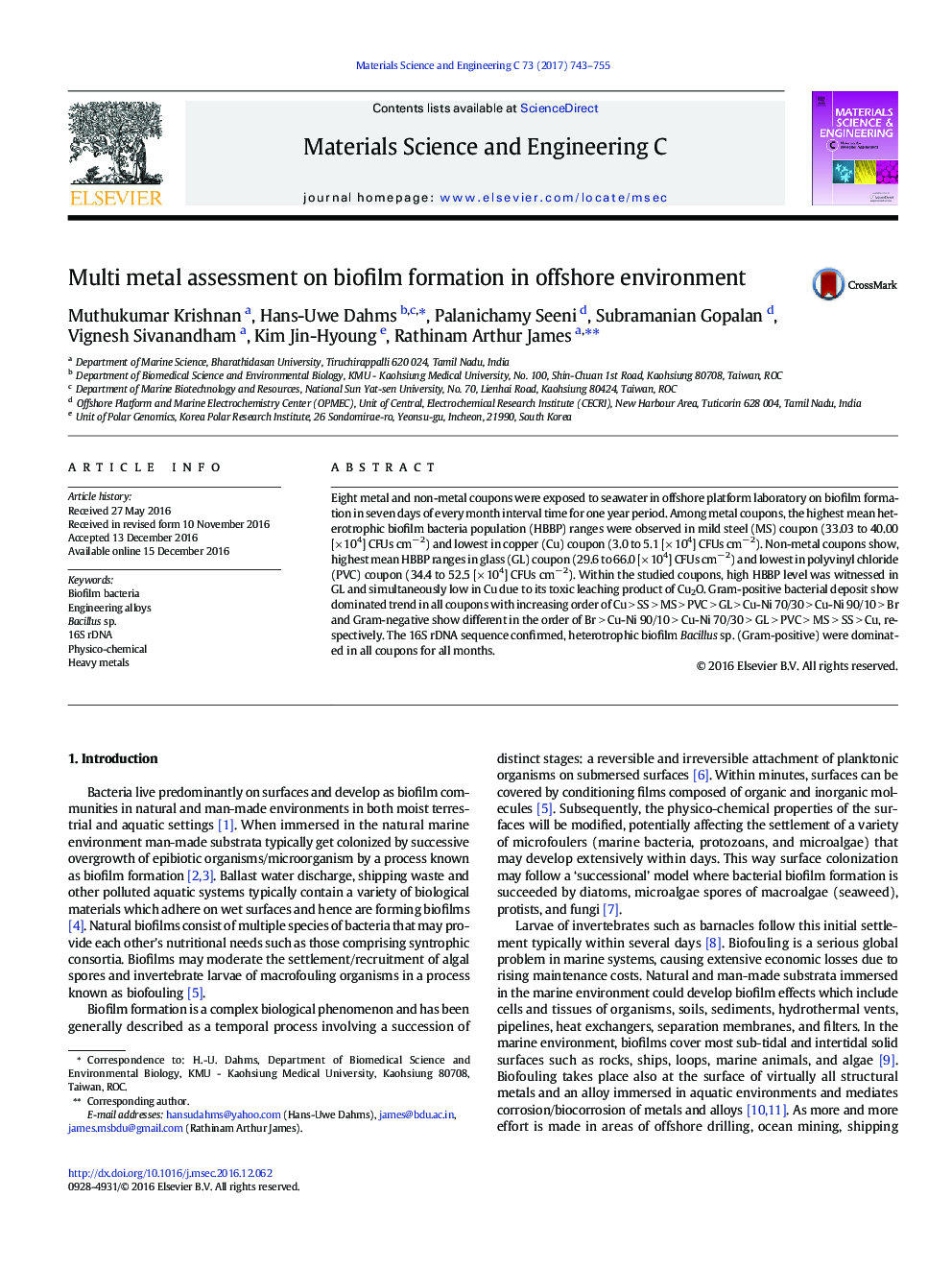| Article ID | Journal | Published Year | Pages | File Type |
|---|---|---|---|---|
| 5434983 | Materials Science and Engineering: C | 2017 | 13 Pages |
â¢HBBP were high on PVC coupons and low on Cu couponsâ¢16S rDNA study confirms, majority of Gram-positive (Bacillus sp.)â¢Pathways responsible for microbial accumulation due to elevated physico-chemical parameters
Eight metal and non-metal coupons were exposed to seawater in offshore platform laboratory on biofilm formation in seven days of every month interval time for one year period. Among metal coupons, the highest mean heterotrophic biofilm bacteria population (HBBP) ranges were observed in mild steel (MS) coupon (33.03 to 40.00 [à104] CFUs cmâ 2) and lowest in copper (Cu) coupon (3.0 to 5.1 [à104] CFUs cmâ 2). Non-metal coupons show, highest mean HBBP ranges in glass (GL) coupon (29.6 to 66.0 [à104] CFUs cmâ 2) and lowest in polyvinyl chloride (PVC) coupon (34.4 to 52.5 [à104] CFUs cmâ 2). Within the studied coupons, high HBBP level was witnessed in GL and simultaneously low in Cu due to its toxic leaching product of Cu2O. Gram-positive bacterial deposit show dominated trend in all coupons with increasing order of Cu > SS > MS > PVC > GL > Cu-Ni 70/30 > Cu-Ni 90/10 > Br and Gram-negative show different in the order of Br > Cu-Ni 90/10 > Cu-Ni 70/30 > GL > PVC > MS > SS > Cu, respectively. The 16S rDNA sequence confirmed, heterotrophic biofilm Bacillus sp. (Gram-positive) were dominated in all coupons for all months.
Graphical abstractDownload high-res image (100KB)Download full-size image
